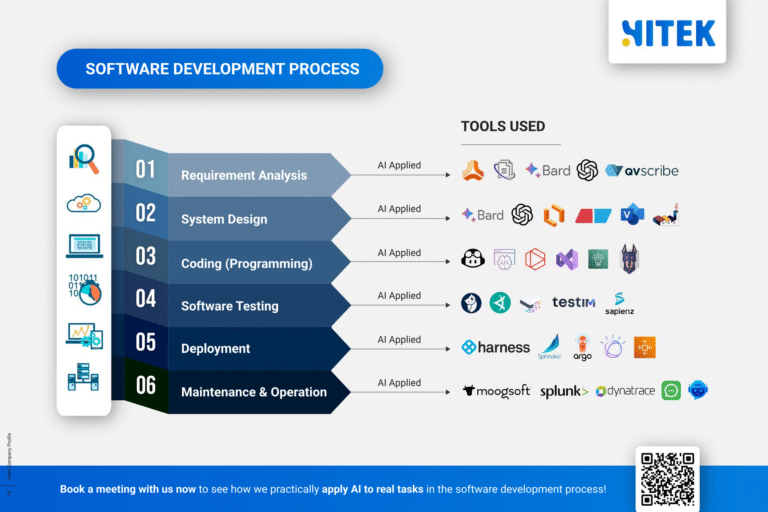If you’ve browsed through GitHub releases or followed software updates, you’ve likely encountered the term “RC”—short for Release Candidate. But what exactly does it mean, and why is it such a big deal in software development?
In this guide, we’ll break down the role of RC in software development, why it matters for developers and businesses in Australia, and how it fits into the broader software release lifecycle.
Contents
ToggleWhat Is a Release Candidate (RC)?
A Release Candidate (RC) is a near-final version of a software product that’s considered stable enough for public testing. It’s the last step before an official release, allowing developers to catch critical bugs before the software reaches end users.
Think of it as a dress rehearsal—everything is set, but the team needs one final check before the big launch. If no significant issues are found, the RC becomes the final release. If bugs pop up, developers fix them and roll out a new RC (e.g., RC1, RC2) until the software is deemed ready.
Key Characteristics of an RC
- Stable but not final – Most features are complete, but minor tweaks may still happen.
- Publicly tested – Often released to beta testers or early adopters for feedback.
- Bug-focused – The goal is to find and fix last-minute issues.
Why Release Candidates Matter in Software Development
1. Ensures Higher Quality Releases
Software bugs can be costly—especially for businesses relying on stable applications. By releasing an RC, developers can catch critical flaws before they affect users. For example, companies like Atlassian (founded in Australia) use RC phases to refine products like Jira and Confluence before full deployment.
2. Reduces Post-Launch Risks
An unexpected crash or security flaw after launch can damage a company’s reputation. The RC phase acts as a safety net, allowing developers to address issues proactively.
3. Engages the Community
Many open-source projects (like Linux) rely on community feedback during the RC stage. This collaborative approach helps improve software reliability and user experience.
RC vs. Beta vs. Alpha: What’s the Difference?
To understand where RC fits in, let’s compare it to other pre-release stages:
| Stage | Purpose | Audience |
|---|---|---|
| Alpha | Early testing, core features only. Likely unstable. | Internal testers only. |
| Beta | More stable, most features implemented. | Limited public testers. |
| RC | Nearly final, critical bug fixes only. | Wider public testing. |
| Stable | Official release, ready for general use. | All end users. |
An RC is closer to a final product than a beta version. While beta releases may still introduce new features, an RC focuses purely on stability.
How Australian Tech Companies Use RC Releases
Australia’s tech industry is booming, with companies like Canva, Afterpay, and Atlassian leading the charge. These companies rely on structured release cycles—including RC phases—to maintain high-quality software.
Example: Atlassian’s Release Process
Atlassian follows a rigorous release pipeline for products like Bitbucket and Trello. Before a major update, they deploy multiple RC builds to ensure stability. This approach minimizes disruptions for millions of users worldwide.
Startups & Agile Development
Many Australian startups use Agile methodologies, where frequent releases are standard. An RC phase helps them balance speed and reliability, ensuring updates don’t break existing functionality.
Best Practices for Testing a Release Candidate
If you’re a developer or QA engineer working with an RC, follow these best practices:
- Focus on Critical Bugs – Minor UI glitches can wait; prioritize crashes and security flaws.
- Automate Regression Testing – Use tools like Selenium to ensure new fixes don’t break old features.
- Gather User Feedback – Platforms like UserTesting help collect real-world insights.
- Monitor Performance – Track metrics like load times and error rates using New Relic.
Final Thoughts: The Role of RC in Modern Development
The Release Candidate phase is a critical checkpoint in software development. It bridges the gap between beta testing and final release, ensuring that only polished, stable software reaches users.
Adopting a disciplined RC process can mean the difference between a smooth launch and a PR disaster for Australian developers and businesses. Whether you’re working on a fintech app in Sydney or a SaaS platform in Melbourne, RC testing should be non-negotiable.
Want to Stay Ahead in Software Development?
To refine your release strategy, consider exploring Agile best practices or diving deeper into CI/CD pipelines. The right approach can streamline your workflow and boost product quality.
Do you have questions about RC releases or software testing? Please post them in the comments—we’d love to hear from you!









